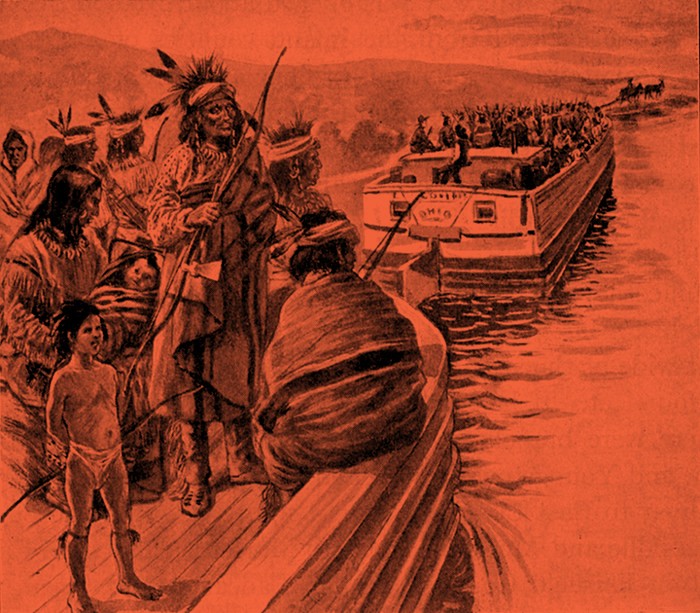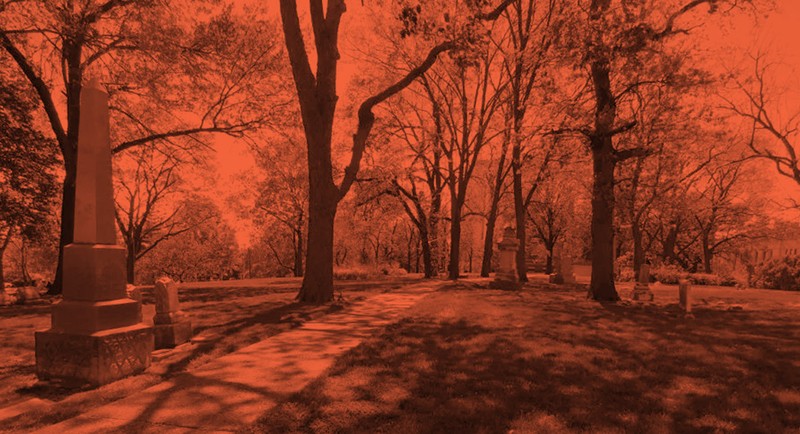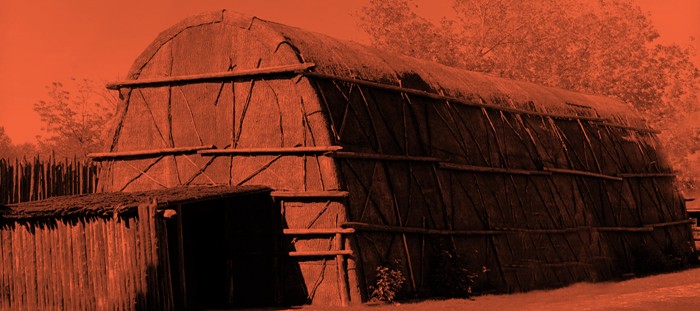Wyandot Nation
Introduction
Text-to-speech Audio
Wyandotte County was named after the Wyandot Nation, who have played a vital part in the community landscape since 1843. Originally from Canada, some of the Wyandot nation or "Wendat - people of the island" were relocated to Ohio and then Kansas City, where they aided in the creation of the safe port town of Quindaro. Today, the Wyandot Nation of Kansas is dedicated to the preservation of Wyandot history and culture and the preservation, protection, restoration, and maintenance of the Wyandot National Burying Ground in Kansas City, Kansas.
Images

Wyandotte National Burying Ground

Wyandot Longhouse

Backstory and Context
Text-to-speech Audio
The Wyandots (also called the Huron by the French) originated in the Georgian Bay area of Ontario, Canada. They referred to themselves as Wendat, or People of the Islands. In 1843, the Wyandots were forced to leave Ontario due to war and disease. One group headed east to Quebec and the other south to Ohio and Michigan. Upon arriving here, the name Wendat was Anglicized to Wyandot/Wyandott/Wyandotte.
In 1843, the Wyandots were forced to leave Ohio. They were the last of the Indian Tribes to be forced from their lands through the Indian Removal Act, and they relocated to Kansas. Native Americans that inhabited the Northeast Kansas City Kansas region prior to the United States coming to be were the Kansa 'Kaw" and the Delaware. After arriving in Kansas by boat through the soon to be port of Kaw Point, the Wyandot purchased thirty-six sections of land from the Delaware Indians for $46,080. They were given an additional three sections by Delaware in appreciation for the land they had given to Delaware in Ohio.
That same spring, it rained for six weeks and at Kaw the River rose 14’ above its banks, covering what is now Kansas City, Kansas, and Kansas City, Missouri with water. Disease spread quickly due to the flooding, and more than 100 Wyandots died. These were the first burials at the Wyandotte National Burying Ground. This burying ground was not new to the area though, as this sacred ground already served as the Huron Cemetery.
After settling into the NE KCK area, the Wyandot Villagers realized they shared similar beliefs with the abolitionist regarding slavery and decided it was a good thing to sell some of their lands to this group to form a free state port town. That town became Quindaro, the first free port on the Missouri River.
Following the Civil War, the Wyandots that stayed in Kansas (while others moved to Oklahoma) came to be known as the Wyandot Nation of Kansas. The names of prominent Wyandots still mark the streets: Armstrong, Tauromee, Splitlog, and Clark. Today, the Wyandot Nation of Kansas is dedicated to the preservation of Wyandot history and culture and the preservation, protection, restoration, and maintenance of the Wyandot National Burying Ground which was nearly demolished in the early 20th Century until the three Conley sisters barricaded themselves in the cemetery to save it from destruction.
Sources
Accessed June 8th 2022. https://www.google.com/url?q=https://wyandotte-nation.org/culture/history/published/provisional-government&sa=D&source=docs&ust=1654719657631868&usg=AOvVaw24bWEzivXdB_Xodog1a51H.
Know Your KCK History: The Wyandot Nation of Kansas, KCKPL Programs. Accessed June 8th 2022. https://kckplprograms.org/2020/11/05/know-your-kck-history-the-wyandot-nation-of-kansas/.
Our Story, Wyandot Nation of Kansas . Accessed June 8th 2022. https://www.wyandot.org/wyandotKS/our-story/.
https://wyandotte-nation.org/
https://kckplprograms.org/2020/11/05/know-your-kck-history-the-wyandot-nation-of-kansas/
